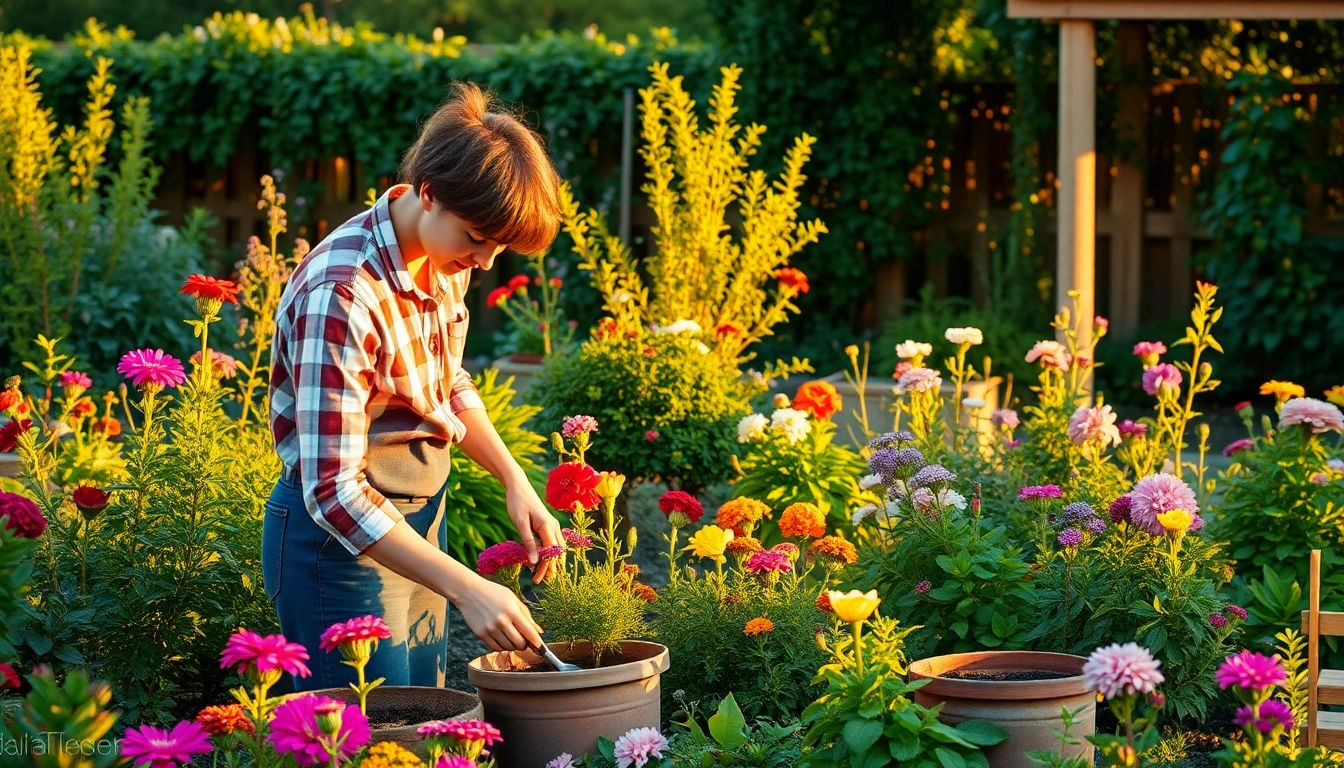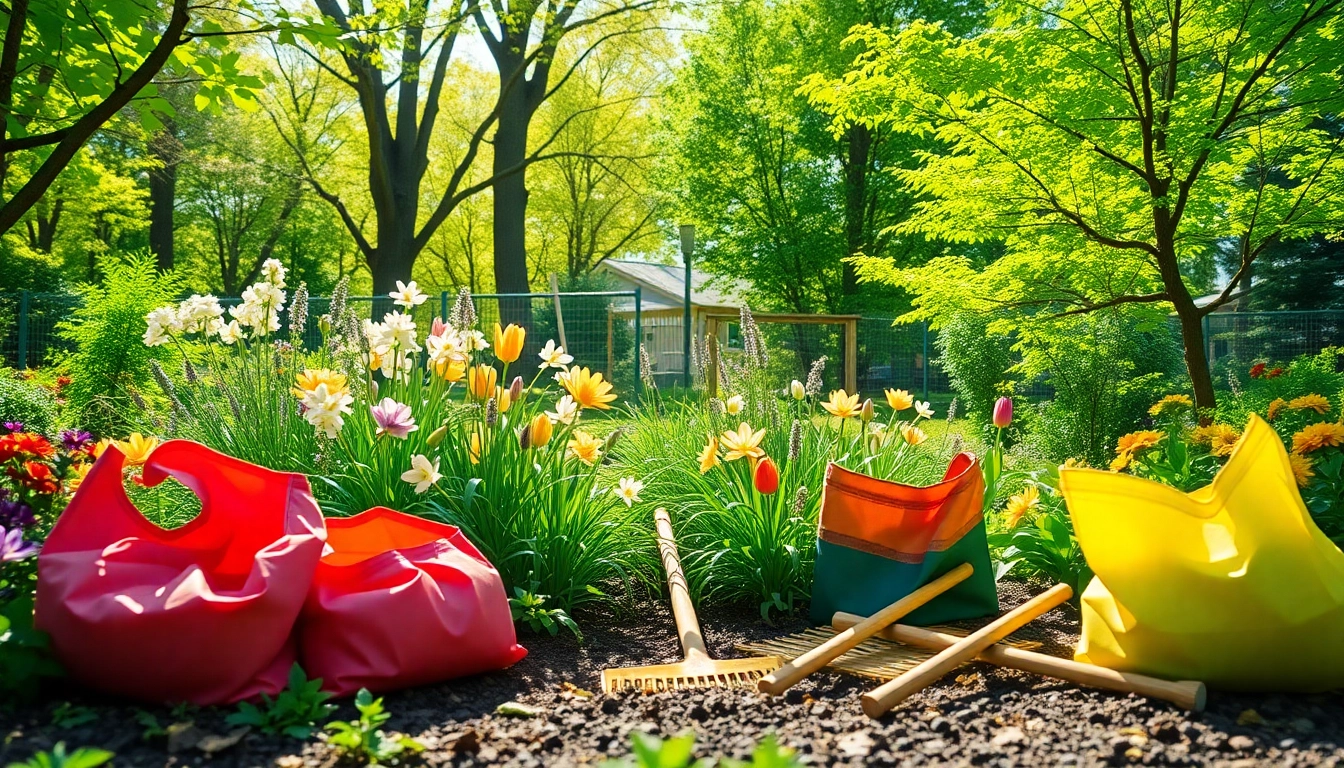Understanding Garden Maintenance Services
What Is Garden Maintenance?
Garden maintenance refers to the ongoing care and management of outdoor spaces to ensure their health, appearance, and functionality. This includes a variety of activities such as lawn care, tree trimming, flower bed upkeep, insect and disease management, and soil health improvement. A professional garden maintenance service can assist homeowners and property managers in keeping their gardens in optimal condition, providing both aesthetic and practical benefits. Whether your garden is expansive or modest, regular maintenance is key to maximizing its potential.
Importance of Regular Care
Regular garden maintenance is essential for multiple reasons. Firstly, it enhances the aesthetic appeal of your outdoor space, making it more enjoyable for homeowners and visitors alike. An attractive landscape can also increase property value. Secondly, regular care prevents the proliferation of weeds and pests, which can quickly overrun a garden and damage plants. Healthy plants are less susceptible to diseases, which can save time and resources in the long run. Lastly, a well-maintained garden promotes biodiversity, inviting pollinators and beneficial insects that support ecological balance.
Types of Services Offered
Garden maintenance services encompass a broad range of offerings tailored to the specific needs of each garden. Among the most common services are:
- Lawn Care: Mowing, aeration, fertilization, and weed control to maintain a lush, healthy lawn.
- Pruning and Trimming: Shaping and maintaining trees and shrubs to promote healthy growth and maximize beauty.
- Seasonal Clean-up: Preparing the garden for changing seasons with tasks like leaf removal, debris clearing, and mulching.
- Pest and Disease Management: Implementing integrated pest management strategies to minimize harm to plants.
- Soil Health Improvement: Testing and amending soil to enhance fertility and structure for optimal plant growth.
Essential Gardening Practices
Soil Preparation and Health
The foundation of a thriving garden begins with healthy soil. Soil testing is crucial and allows gardeners to determine pH levels and nutrient content. To enhance soil health, incorporating organic matter such as compost can significantly improve soil structure, drainage, and nutrient availability. Additionally, practicing crop rotation and cover cropping can help maintain soil fertility and prevent erosion.
Plant Selection and Placement
Choosing the right plants for your garden involves understanding the local climate, soil conditions, and sunlight availability. Native plants are often preferable as they are adapted to the local environment, require less water, and support local wildlife. Moreover, careful planning of plant placement can enhance the garden’s aesthetic appeal and functional efficiency, ensuring taller plants do not shade those that require more sunlight.
Fertilization and Pest Management
Effective fertilization strategies involve knowing when and how much to fertilize different types of plants, whether using organic or synthetic fertilizers. Integrated pest management (IPM) strategies go beyond chemical treatments, focusing on monitoring pest populations and using cultural practices that deter pests. Introducing beneficial insects and companion planting can naturally reduce pest damage while enhancing plant health.
Detecting Common Garden Problems
Identifying Weeds and Pests
Weeds compete for nutrients and water, often choking out the plants you want in your garden. Regular inspections can help identify weeds early; mechanical removal, mulching, or the use of herbicides are common methods for control. Similarly, pests like aphids, spider mites, and beetles can cause severe damage if not addressed promptly. Tools like sticky traps and monitoring plants for irregularities can help in early detection.
Understanding Plant Diseases
Fungal, bacterial, and viral diseases can devastate garden plants. Symptoms like yellowing leaves, wilting stems, or unusual growth patterns can indicate disease. Implementing preventive measures such as crop rotation, proper spacing, and adequate air circulation can help reduce the risk. Additionally, prompt removal of infected plants can limit the spread of disease.
Signs of Nutrient Deficiencies
Nutrient deficiencies in plants can manifest in various ways, including yellowing leaves (often nitrogen deficiency), purple tints (phosphorus), and poor root development (potassium). Regular monitoring of plant health and soil testing can help rectify deficiencies early, ensuring plants receive the nutrients they need to thrive.
DIY vs. Professional Services
When to DIY Your Garden Maintenance
Many homeowners may choose to undertake certain aspects of garden maintenance themselves, particularly for small gardens or when financial resources are limited. Basic tasks like mowing the lawn, planting seasonal flowers, or weeding can be manageable with proper research and supplies. However, it’s important to recognize one’s limitations, especially when dealing with higher complexity tasks such as tree care, heavy landscaping, or addressing severe pest infestations.
Benefits of Hiring Experts
Hiring a professional garden maintenance service brings a wealth of expertise that can save time and guarantee high-quality results. Professionals can provide tailored plans for your garden, ensuring that all aspects, from soil health to pest management, are optimized. Moreover, they have access to industry-leading tools and practices, which can be a significant advantage, especially for larger gardens or properties requiring extensive care.
How to Choose the Right Service
Selecting the right garden maintenance service involves assessing various factors. Look for companies with positive reviews, proper insurance coverage, and certifications. It’s beneficial to request quotes from multiple services to compare pricing and included services. Additionally, consider visiting gardens they have previously maintained to inspect their work quality firsthand.
Measuring the Success of Your Garden
Setting Up Garden Goals
Establishing clear, measurable goals for your garden maintenance is vital for evaluating success. Goals may include growing specific plants, improving overall landscape aesthetics, or managing weed populations effectively. Utilizing the SMART criteria (Specific, Measurable, Achievable, Relevant, Time-bound) can help make these goals more effective.
Visual and Environmental Health Indicators
Monitoring the overall health of your garden involves observing visual cues like plant growth vitality, flower bloom levels, and the presence of beneficial insects. Moreover, environmental indicators like soil moisture levels and drainage efficiency play significant roles in determining garden health.
Feedback and Continuous Improvement
Regular assessment and feedback from your garden can drive continuous improvement. Keeping a garden journal to track plant performance, weather conditions, and maintenance activities can offer valuable insights for future planning. Engaging with local gardening communities can also provide additional support and information to refine your gardening practices.



